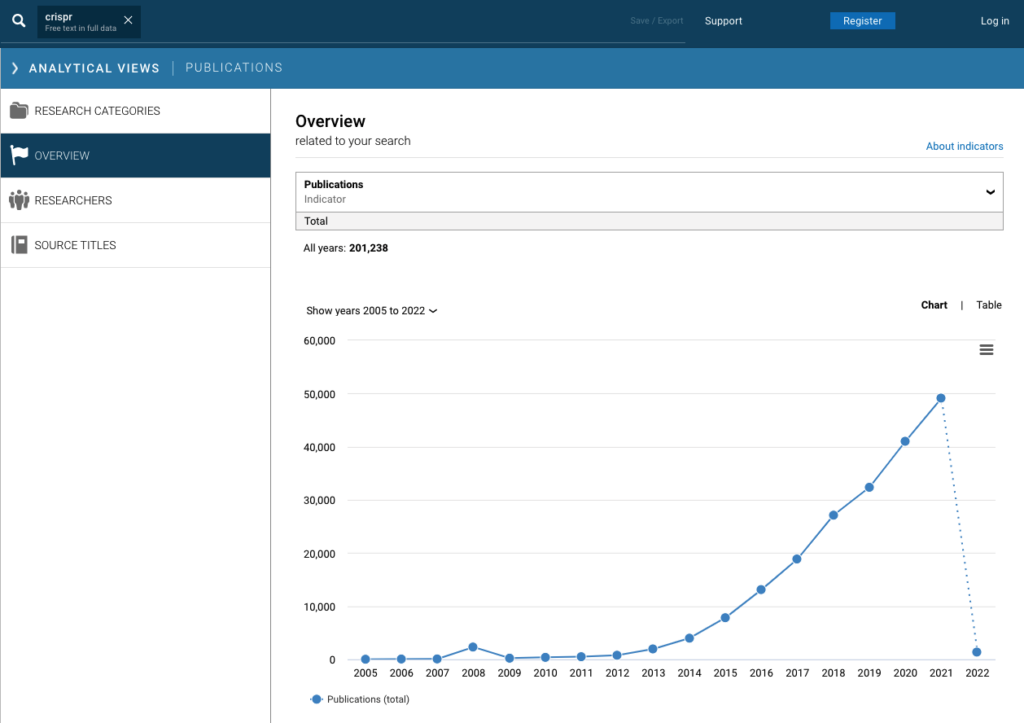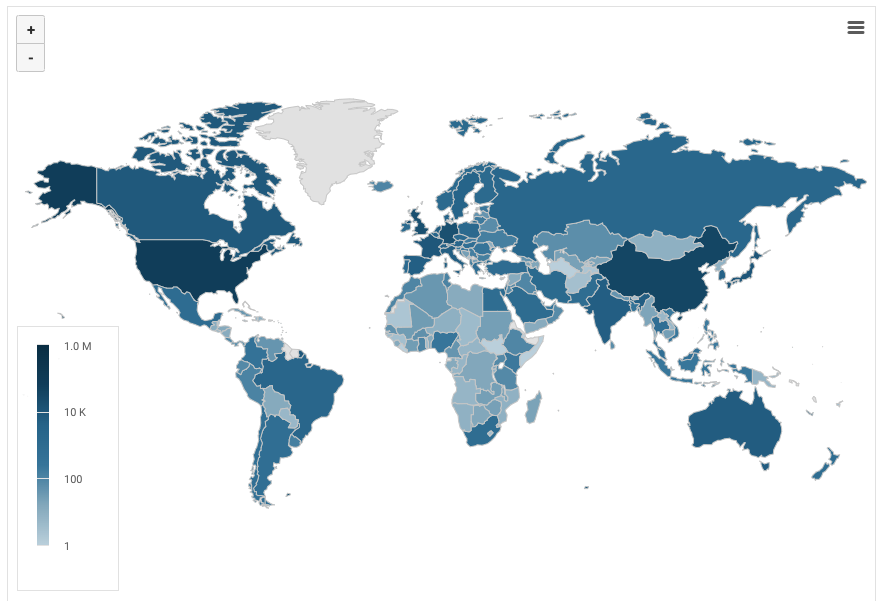Horizon scanning, technology watch, and technology foresight are all research activities that involve monitoring for strategic planning. Dimensions supports leading organizations across the globe with these important mission needs – by providing data, tools, and expertise. Not only do we have the largest collection of research data, our unique reach expands beyond publications to include grants, patents, clinical trials, policy documents, and datasets, offering a more complete picture of activity and impact.
Horizon scanning is an activity that targets the ‘unknown unknowns’. This approach usually requires a broad information search with the long view in mind, identifying potential things that may arise in the years ahead. As horizon scanning does not necessarily have a targeted area of tech disruption to monitor, you can look broadly for any weak signals or statistically unusual research activity to identify patterns or anomalies for further investigation. You can extend the search to sources beyond traditional research literature, by incorporating your own internal data or looking for expert opinions. The goal here is to question assumptions about what will happen in the future and uncover any potentially important, unexpected trends that may affect your overall strategy.
In contrast, technology watch focuses on the ‘known unknowns’, where you can monitor the research landscape in a concentrated way for any emerging categories or changes over time. For example, your organization may have already identified that the decentralized web is an area that could generate potential disruption for you in the future, but you’re not sure what subcategories of technologies could arise from that innovation, and want to uncover the threats and/or benefits.
Technology foresight involves applying the results of either horizon scanning or technology watch activities to your strategic planning. You can use the information gathered from these activities to generate future scenarios and adapt your policy or planning activities to prepare for any possible changes.
All foresight processes involve some iteration of scanning, analyzing and synthesizing information, and then adapting your strategy to the results. Between Dimensions’ extensive data sources and our expert analyst team, we are best placed to support you along every step of the process:
Step 1: Outline your objectives.
Are you seeking the known unknowns or the unknown unknowns? This will help you define how broad or narrow you want to go, and what indicators will signify an important change for your organization. The Dimensions team can help with these early planning stages to set your project up for success.
Step 2: Start your scan and gather relevant information.
At this stage, you should think about what sources you want to include and how you will manage the potentially large amount of information that will be included in your analysis. Using Dimensions, you can easily search and sort data from an extensive range of sources, including grant information from more than 600 global funding organizations, and one of the world’s largest collections of patent data.
Step 3: Analyze the results.
Once you conduct your search, you can then dive into trends, looking at the volume of research that has occurred around a topic over time, and any patterns in geographic or institutional data.


Figures 1 and 2 are Dimensions screenshots that show growth and geographic representation of CRISPR as a topic.
You can also explore if certain regions are more active in a particular research area, and identify thought leaders, see where the funding is coming from, and what the leading institutions are in the field. You can look at emerging subtopics to see how the field is branching off, or identify new technologies that are rising up out of the area.
All of this data can be used to benchmark your organization against global patterns, and establish how prepared you are for these potential changes.
Step 4: Incorporate the results into your strategy.
Now you have gathered this information, you then need to apply it in a way that is most relevant for your organization. The Dimensions team can help you to decide on the best reporting approach, and identify experts for additional insights about what the results could mean. Collaborating with our experts at Dimensions is just the start of successful project outcomes and planning for future projects.
For more information and detailed examples, watch our on-demand webinar.
Talk to us and learn how we can support your organization
Are you interested in finding out how Dimensions can benefit your organization? Contact us and we’ll be in touch soon.
